BY CLAYTON PATTERSON | New York City, for those who get the vibe, is a city of electricity, high energy. There were so many fast-moving streams one could be carried away in.
There is the people rapids of Canal St., or the swift-moving currents of the Uptown crowd on 57th St. Or being on a rush-hour train, people elbow to elbow. All jammed together but separate.
All this energy has transformed into emptiness, people wearing masks, separated by the length of two yardsticks. Instead of people looking outward, they are looking inward. The mood is one of darkness, death and dying.
In all this darkness and death can there even be a single ray of bright light? Yes! It springs from a memory. A memory of the glowing, warm, loving smile of Jimmy Webb. R.I.P.
Anyone who spent time in a Downtown rock ’n’ roll scene or was around during the punk period on St. Mark’s had to have seen, come across or known Jimmy Webb from Trash and Vaudeville. But who really was Jimmy Webb?
He comes from Upstate, New York, from a town named Wynantskill. He was born Aug. 28, 1957, in Troy, N.Y. By the time he reached kindergarten, he knew he was different.
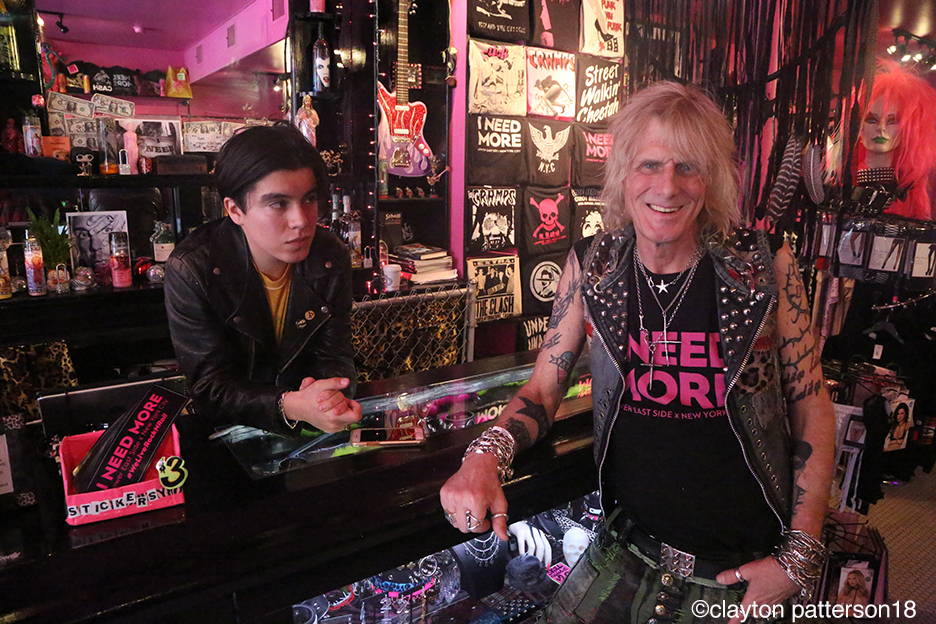
In the spring of his life he felt he was different from the other kids. They would gather around him and point and whisper. He felt more like a monarch butterfly and everyone else was one of those white cabbage moths. In his Peter Pan version of life, he was not a pirate, but a fairy. He soon realized his difference was he was gay.
The next life-changing moment, when he was 12 or 13, came by chance. He and a friend talked his friend’s older sister into buying them a bottle of Boone’s Farm Tango liquor. They were drinking by a creek. His friend had a transistor radio and said, “You have got to hear this song, ‘Walk on the Wild Side,’” by Lou Reed.
It was Jimmy’s first intoxication with music — it wasn’t the liquor, but the sound coming from the transistor radio. He had no idea what the song meant, no idea what a leather daddy or a tranny was or who Candy Darling was. But the song connected with him, not on a conscious but an unconscious level. That spirit, that essence was burned into his psyche.
At 16 he graduated high school, not, as he said, because he was so much smarter than everyone else, more just because of time and circumstance. Time, circumstances, chance, became one of the dominant factors in his life.
He left his small town for another small town, Winsted, and attended Northwestern Connecticut Community College. He studied business, but his loins were screaming for adventure. He and a couple of friends dropped out and hitchhiked to Florida. It was a game changer for this 16-year-old. It was 1975, the disco period.
That journey ended in Fort Lauderdale, with him sleeping on the beach, under the palm trees. His two friends headed back north to safer ground. Jimmy loved the adventure.
He found his way to the city’s largest gay disco club. He became a chicken for two older gay chicken hawks. They grabbed him up. They opened the door to his next adventure.
He never felt exploited, more like taken care of. Sitting in a hotel dining room, he had an OMG moment: There was Charles Nelson Reilly of “Hollywood Squares” fame, a TV show that his grandmother had been captivated watching.
Soon these two gays guys took him to New York City. All he had was a stolen hotel pillowcase filled with six garments of clothing. They lived on the Upper West Side.
This relationship was not one of being taken advantage of but an education. They got him a job as a barback in a gay bar. He met Jamie, a hairdresser, who bleached his hair, and he was slowly transforming into Jimmy.
He was a walker. He walked and walked all over Manhattan, which he said was the largest crayon box in the world. The colors were made up by the Fifth Ave. ladies while the darker colors were the seedy sides of 42nd St., the pimps, the whores, the blacksploitation movies.
He got a job as a ticket taker in a porn movie theater. This became the beginning of the street hustler part of his survival.
Jimmy was attracted to music and dancing. He breezed past the long line of people hoping to get picked to enter Studio 54. He was that cute punk boy. Immediately, with a wink, a nod and a wave, in the front door he went. Dancing with stars like Bianca Jagger, fashion designer Halston.
To get a taste of the other side of clubland, he went from the glitter of Studio 54 to the more dark and dingy gay-centric Pyramid Club on Avenue A.
One thing about the Pyramid that fascinated Jimmy was how democratic it was. There was skinhead security, Hells Angels hanging out, drag queens dancing on the bar, and as was typical of the Lower East Side, almost one of every type.
He was never a bar-top boy dancer. By now New York City had migrated past the disco period and into punk. Again, it was the music that entered his life — specifically, the Iggy Pop album from 1997, “The Idiot.”
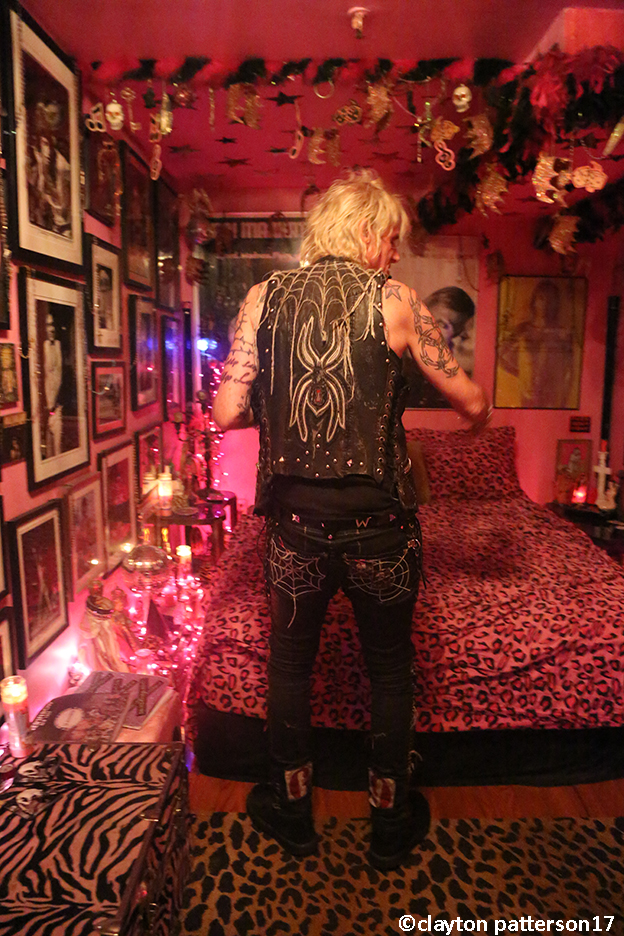
One of the ways Jimmy was able to become somewhat of a club celebrity was not his designer fashion statement — his clothes came from the garbage — but his sense of style. Often his clothes were held together by safety pins. As Johnny Rotten said, the safety pins were not a fashion statement but to hold the clothes together.
It was swimming in the club world where he was introduced to another of the most serious game changers of his life — hard drugs. Heroin and cocaine.
Like most people, his introduction was delicious, intoxicating, inspiring, a love affair. Soon enough, he was caught in the death grip of addiction. This demon stole everything he owned. Stripped his soul of all joy and left him bare and naked and homeless. An empty shell of a human being.
He was living — in a cardboard box — with the other homeless in Tompkins Square Park. Just days before the Aug. 6-7, 1988, Tompkins Square Park Police Riot, his mother had received a call from a counselor. She drove her pickup truck to New York City, pulled Jimmy out of the sewer, took him back Upstate.
This period was no picnic either. He landed in jail, he was facing 7 1/3 to 25 years behind bars.
“Yeah, it was pretty deep, and I was put in jail in Albany, New York,” he recalled. “I was going to go to prison, but by grace, and blessings and karma and destiny — whatever you want to call it — I was released.
“I did a ‘strong probation’ thing. [But] I fell back into drugs again as soon as I got out of jail. I may have been living in a park here — but I always had a mommy, you know, who’d buy coffee or do my laundry or something. How pathetic at thirtysomething years old? I’m not f—ing punk rock. You know what I mean?
“So, then I had a suicide attempt and I got off drugs for two years and tried to kill myself and ended up on a kidney machine,” he continued. “I was on welfare, on S.S.I., not the man that sits before you now.”
Again, it was an Iggy song that motivated him, “I Wanna Live.” Over time, he reformed and became clean.
It was during this period that he turned from a Lower East Side legend into a hero of mine. I have a short list of heroes, survivors, who came back from the darkest depths of addiction, proving to others that it is possible to beat drugs. Another public example of a hero of mine is Anne Hanavan, a proud survivor who gives much back to that part of the addiction world, as did Jimmy.
Soon New York City pulled Jimmy back. He landed on St Mark’s and was hired for minimum wage to work at, and later manage, the punk/rock ’n’ roll fashion boutique Trash and Vaudeville.
His personality lit up the block and he became a people magnet for Trash and Vaudeville. People came as much for Jimmy as the punk clothes the place sold. Jimmy and Trash and Vaudeville became thought of as one identity.
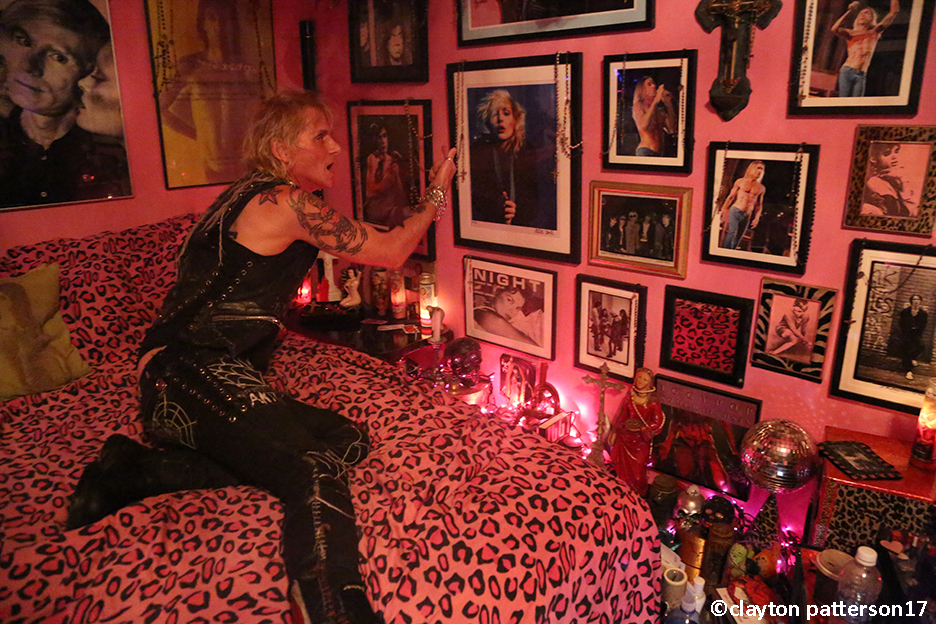
His charisma attracted a wide range of the most recognized talents in the music world. In 2016, when Trash and Vaudeville moved from St. Mark’s, Jimmy moved on, as well. In 2017, with support from Iggy Pop and Slash of Guns N’ Roses, he opened his own store, I Need More — named after an Iggy Pop song — at 75A Orchard St.
Debbie Harry, a longtime friend, was the shop’s featured female star.
The place was a gem, a throwback to the time before corporate cookie-cutter retail, when New York City was filled with one-of-a-kind shops — created with an original point of view, from the inspiration of a knowledgeable and sophisticated owner.
No question, as a merchant of punk/rock wear, Jimmy was a go-to guy for stylists from across the spectrum, Vogue to MTV to fanzines. The ambience of I Want More was welcoming, a place where the music stars he was friends with and who inspired him, could feel at home. The interior is bathed in the color pink and stuffed with the best of fashion and accessories from his period, the period he loved.
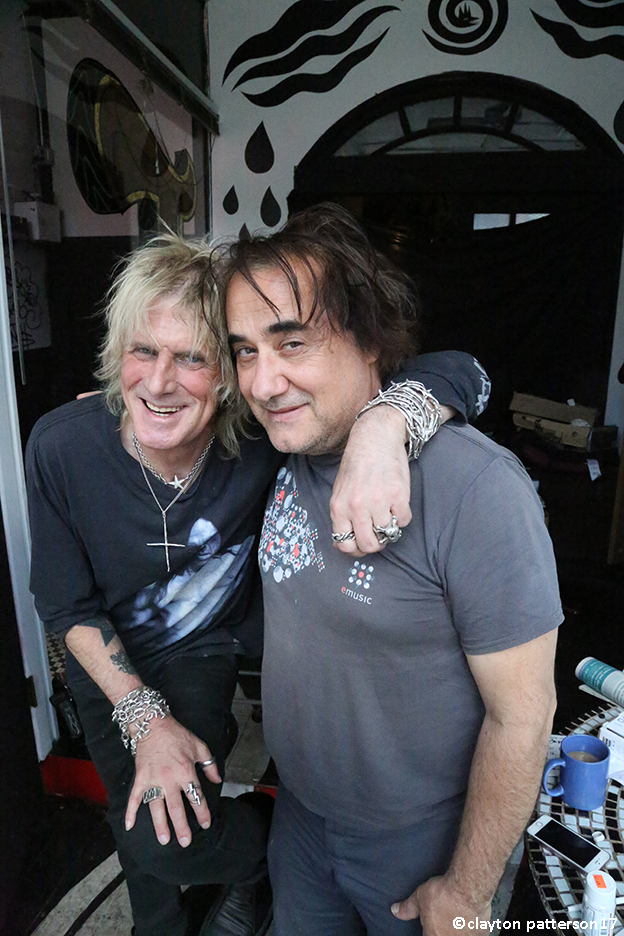
Jimmy came to his own version of style after seeing photos of Iggy at the 2003 Stooges reunion show at Coachella. He observed the singer’s very low-cut leather pants, cut to just above his crotch hairline.
Next Jimmy spoke to Agathe Blois from NY Custom Leather. Agatha is the Queen of Leather rock ’n’ roll clothing extraordinaire. In the ’90s, she started off as a stripper, then moved into custom leather clothing. She had a shop on E. Ninth St., then in the early 2000s moved to Hollywood.
In Hollywood, Agathe carried on her leather business, making leather vests for the Hells Angels and leather outfits for Hollywood stars and the most famous music stars.
Working with Agathe, Jimmy got his style — his crotch hairline leather pants, and his leather vest with the spider and web embroidered on the back. He was now the fully transformed Jimmy Webb. He was making his punk fashion statement.
I had a number of overlapping moments with Jimmy. I first photographed him on the street in his ’80s period. A punk friend told me I had to meet this junkie celebrity. Turned out to be Jimmy. He was cool. Leaning on the wall close to nodding out.
After this shoot, we became familiars, and later friends. The fact he was a junkie was not any kind of shock. It was no surprise to me that one way he survived was being a hustler. The sex industry has always been a major employer of the LES cultural. The LES was considered Warhol’s bedroom.
I have known and photographed many different people in that industry — from dominatrixes and madams to street prostitutes, both high-end and low-end.
They were just another collection of LES people. Why should I care what they do to make money? Not a problem for me, was just a fact. Nothing more. Be cool with me and I will be cool with you.
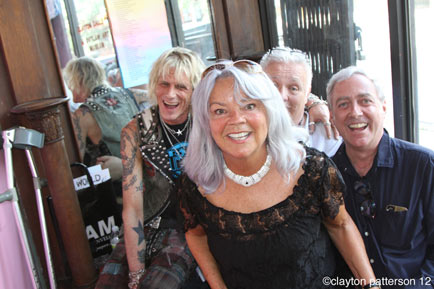
Another time Jimmy and I connected was because of the song “Walk On the Wild Side.” Candy Darling is mentioned in this Lou Reed song. Working with my friend Jeremiah Newton, using his Candy Darling collection, we created a show of Candy Darling drawings at the Clayton Gallery and Outlaw Art Museum.
One day Jimmy came over to see the show and to meet his longtime friend Cherry Vanilla. Jimmy, Jeremiah and I were in conversation about having a Candy Darling wig show at his I Want More store. The wigs are rare; one was given out at the NY ACKER Awards to Sur Rodney Sur for his work helping people with AIDS. Cynthia Carr, another NY ACKER recipient, has in-depth knowledge of Candy Darling. She received a Candy Darling Diary.
However, the wig show did not happen. Jimmy left the planet.
So much of his later period is well known. It is his early period that I am attempting to make a place for. Working with Joey Goodwin from Overthrow Boxing, we created, yet to be published, #2 Overthrow 12-round boxing magazine, which features Jimmy.
I also had Jimmy on my 8 Ball Radio program, “The Clayton Patterson Show.” The show was produced by Weston Priest, set up by Cody Simon and Emily Singer. There is an audio file with both of these interviews.
In the last couple of years Jimmy’s cancer was getting progressively worse, and he was in and out of the hospital. Cancer took him from us.

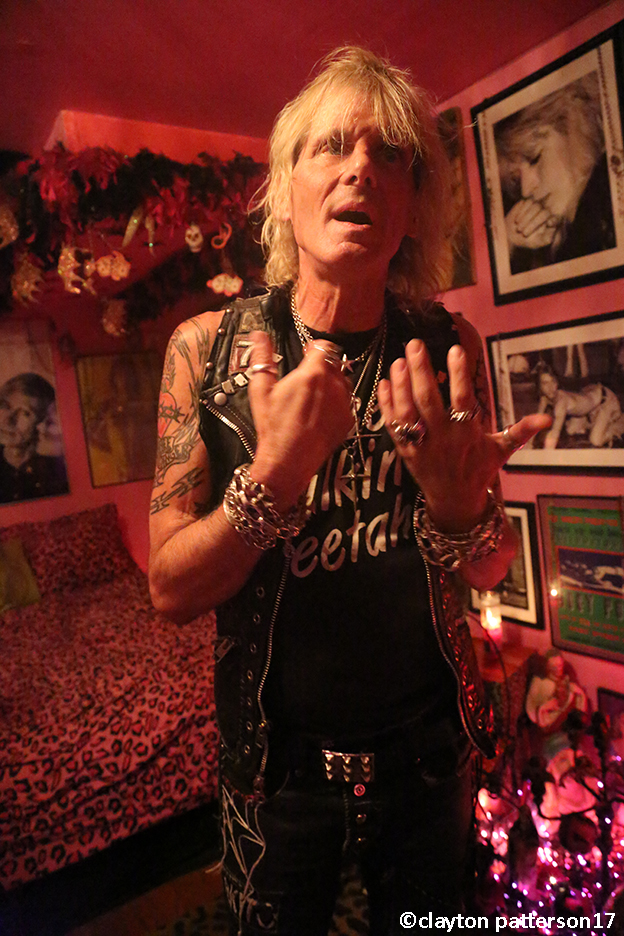
Thanks Clayton. We will all miss Jimmy, he was my go to person when I needed cheering up
Thanx Clayton. For continuing to document the EV. ????
Thank you for this exhaustive history of Jimmy Webb!
I enjoyed reading it and read it outloud to Steve Zehentner. The Lights went out in the EV/LES when Jimmy died.
Thanks Clayton. Great read! What a legend.
Thanks for the nostalgic Walk on The Wild Lower East Side, Lived on 10th St. and B.
Thanks Clayton. Great story and photos.
ThkU Clayton…….for the Love and Light !
I just want to share the link to our episode with Jimmy in October 2018 in case anyone wants to listen + memorialize his story/legacy.
Here it is: https://soundcloud.com/clayton-patterson-show/the-clayton-patterson-show-w-jimmy-webb
RIP Jimmy
Trash and Vaudeville was always our first go to spot for costumes for our shows. And when we didn’t have enough money, almost always, it was never a big problem. Jimmy Webb made a lot of magic happen for a lot of artists in the City.
Great article and wonderful history and memories of Jimmy, thanks for sharing.
Thanks Clayton for this amazing article about Jimmy. He was always so in the NOW, that I never really knew about his early, early days. He was such a beautiful soul, and embodied everything good about Fashion, Punk and the LES. Gonna miss that beautiful smile and wicked sense of humor. Long Live Jimmy Webb.
Hi Keith !
I’m devastated that I didn’t see Jimmy for over a year & didn’t even know he was that sick. Jimmy & I met & became fast friends in 1986 at the Greenwich House rehab. I knew something was wrong when he didn’t come to my play, “Singing in the ER” at Theater for the New City. Jimmy never missed an appearance of mine but when he didn’t show for the last one, I knew something was wrong. It is hard for me to get around since all my toes were amputated in 2008 so I couldn’t make it to his store but I was a loyal customer of his at Trash Vaudiville. The last time I saw Jimmy was when I invited him to be my “date” at the memorial for Holly Woodlawn. Jimmy loved Holly & I loved Jimmy. Please let me know when & if there’s a memorial for Jimmy. I miss him fiercely !